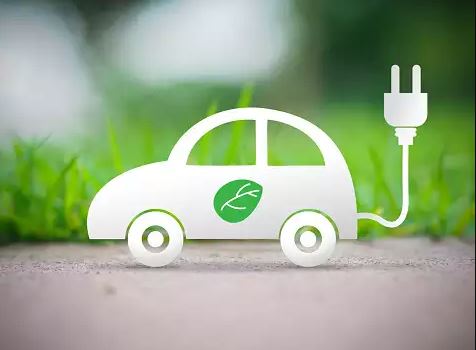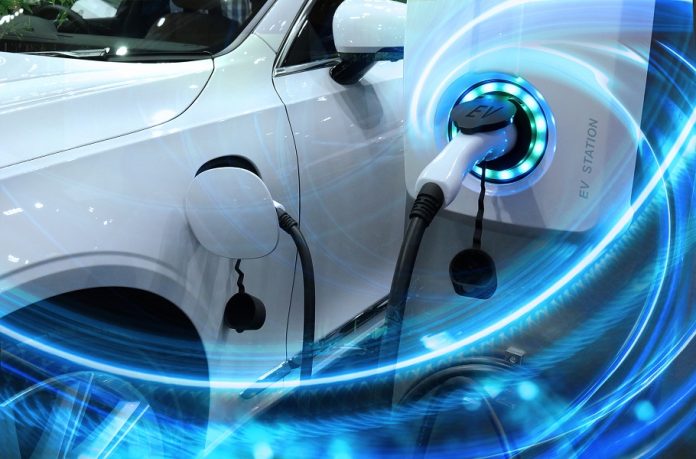India has the greatest explored Electric vehicle market in the world, particularly for two-wheelers. The penetration of electric vehicles has greatly increased over the past few years as a result of numerous manufacturers releasing these vehicles at a seemingly faster rate.
“The Indian economy is anticipated to recover in 2022 as commercial activity picks up, and the auto industry is slated to begin a fresh period of expansion, creativity, and financing.”
The market for electric vehicles is fast changing as consumer interest and technology both grow.
It is anticipated that there will be a major increase in the number of Electric vehicles on land, in the water, and in the air in the next years. The largest automotive markets are anticipated to switch totally to electric vehicles within the next several years, presenting both a vision of a sustainable future and significant economic potential.
Governments all around the world are supporting the EV business with incentives and policies, and consumers choose vehicles that are comparatively curated for low emissions.
It is evident that switching from billions of gasoline-powered cars to electric vehicles won’t be easy and fast, but many analysts predict that a fully-electric era is rapidly approaching.
Electric vehicles will only get greener as nations continue to use sustainable energy sources to power their electricity grids; they may even be 90% less carbon-intensive than gasoline-powered automobiles.
Electrified mobility is becoming more and more popular, and for good reason.
-
Lower operating expenses
Compared to equal petrol or diesel vehicle, an electric car has substantially reduced operating costs. Rather than using carbon-generating fuels like gasoline, electric vehicles use electricity. Due to their greater efficiency and the lower cost of power, charging an electric car is more affordable than consuming gasoline for your transportation needs.
Moreover, the adoption of electric vehicles can be more environmentally benign when powered by sustainable energy sources.
-
Low cost of maintenance
Due to their lack of moving components compared to internal combustion engines, electric vehicles require very less maintenance. Compared to typical petrol or diesel automobiles, electric cars need less maintenance. As a result, operating an electric vehicle has a very low annual cost.
-
Absence of tailpipe emissions in Electric Vehicles
Due to the absence of exhaust emissions, driving an electric car can help you lessen your carbon footprint. The environment is the most essential motivation for some people to purchase an EV. Even if the electricity used to power them is derived from fossil fuels, carbon emissions from electric vehicles are approximately 25% – 30% lower than those of gasoline or diesel counterparts.
Additionally, health risks are significant, particularly in densely populated areas where citizens are increasingly concerned about the effects of air pollution brought on by traffic. One of the main reasons driving consumers to transition to EVs is health concerns.
-
Monetary and tax privileges
An advantage of buying or financing an EV is tax savings. You can use the first-year depreciation allowance of 40% to lower your income tax if you own and use an electric car for your business. Your decision to buy an electric car is supported by the government, which has already established an EV policy that entitles you to up to Rs 1.5 lakh in additional benefits in India. Compared to gasoline or diesel vehicles, electric vehicle registration and road tax are less expensive. The government offers a variety of rules and incentives to encourage the use of EVs in India.
-
Driving Electric Vehicles are conventionally convenient
Electric cars are very efficient to drive and don’t have gears. Only the accelerator, brake, and steering are controlled. Moreover, due to their reduced noise emissions compared to conventional vehicles, electric vehicles are also silent.
As there is no engine beneath the hood, electric vehicles can operate in silence. Noise pollution is a problem since there are more and more polluting automobiles on the road. Electric vehicles are quieter than any of our automobiles. Additionally, it was discovered that the only sound made by electric vehicles are those produced by their wheels or by wind resistance, and only at greater speeds. The introduction of electric vehicles will gradually lead to a more serene environment.
Electric Vehicles and the fuel problem
Fossil fuels are scarce and their consumption is endangering the environment. The public’s health is negatively impacted over the long term by toxic emissions from gasoline and diesel vehicles. Compared to gasoline or diesel vehicles, electric vehicles have significantly lower emissions. From an efficiency standpoint, gasoline or diesel vehicles can only transfer 17%–21% of the energy contained in the fuel to the wheels, whereas electric vehicles can convert about 60% of the electricity generated by the grid to power the wheels. That represents 80% of wastage.
Although gasoline or diesel vehicles release approximately three times as much carbon dioxide as the typical EV, fully electric vehicles has zero tailpipe emissions, even when electricity generated is taken into consideration. India has the lofty goal of generating around 40% of its existing electric power capacity from non-fossil fuel sources by the year 2030, which will lessen the burden of charging electric automobiles.
Moreover, the problem with utilizing fossil fuels to a vast level depletes such a precious resource and causes regular variations in the price of crude oil on a global scale. Governments are addressing these issues in many nations throughout the world by switching to cleaner forms of transportation and lowering reliance on fossil fuel-powered cars.
India’s take on the Electric Vehicle mission plan
Due to the numerous issues caused by the usage of fossil fuels, including their rapid depletion, rising energy prices, the environmental impact of motor vehicles, and consideration of climate change, India recognized the necessity of switching to electric transportation.

A number of state and local governments in India have developed their own plans for carrying out the national Electric Vehicle mission and FAME program.
The FAME India program is an incentive program that promotes the use of electric and hybrid automobiles. FAME India stands for “Faster Adoption and Manufacturing of Electric and Hybrid Vehicles in India” in its full form.
The Ministry of Heavy Industries and Public Enterprises introduced the FAME India plan, which is a component of the National Electric Mobility Mission Plan. There are two phases to the Fame India Scheme. These include:
Phase I: Fame India Scheme’s initial phase began in 2015 and ran until 31st March 2019.
Phase II: The second phase of this program began in April 2019 and will go on until March 31, 2022. The Fame India Scheme Phase II will now run through March 31, 2024, per a decision made by the government.
This program encourages producers of electric vehicles and related goods and services to produce more of them in the nation.
- Its objective is to lower the amount of air pollution and vehicle emissions in the nation.
- This plan also aims to build a charging infrastructure for electric vehicles.
- Additionally, the Fame India Scheme aims to replace 30% of all vehicles on the road with electric ones by the year 2030.
The Indian government is providing both monetary and technical assistance for the overall growth of the electric vehicle industry. A lot of state and local governments have also implemented policies to support the federal plan. In reality, the nation produces eco-friendly automobiles including hybrid and electric models, and over a million individuals currently own one. Its advantages can be observed in the form of less air pollution and fuel savings.
India is transitioning to a more intelligent and digital way of life. More advanced and smart products are surfing the Indian market and are being bought by people.
Our dependence on smartphones has increased since we first lived without them. It is hoped that as users of the modern mobility system, we will transition to a fresh means of transportation in the next ten years, perhaps one that is more electrified.








